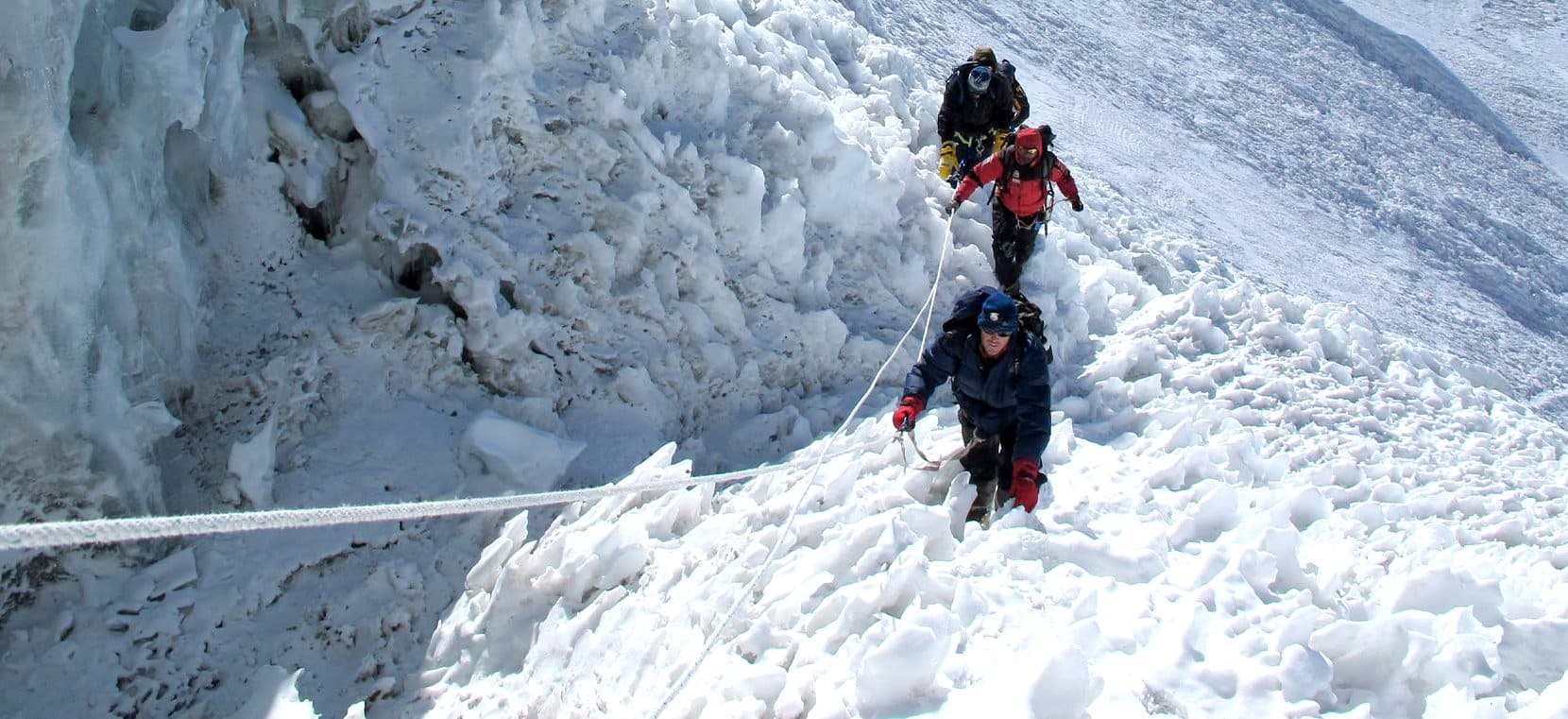
Technical Climbing in Nepal: Challenges and Thrills of the Toughest Routes
Nepal's towering peaks offer some of the world's most demanding technical climbing experiences. We've explored these legendary mountains for years, and the technical routes here push even seasoned alpinists to their absolute limits.
This guide is for experienced climbers ready to take on Nepal's most challenging technical terrain. If you've already mastered advanced climbing techniques and dream of tackling routes that demand everything you've got, these insights will help you prepare for the ultimate Himalayan adventure.
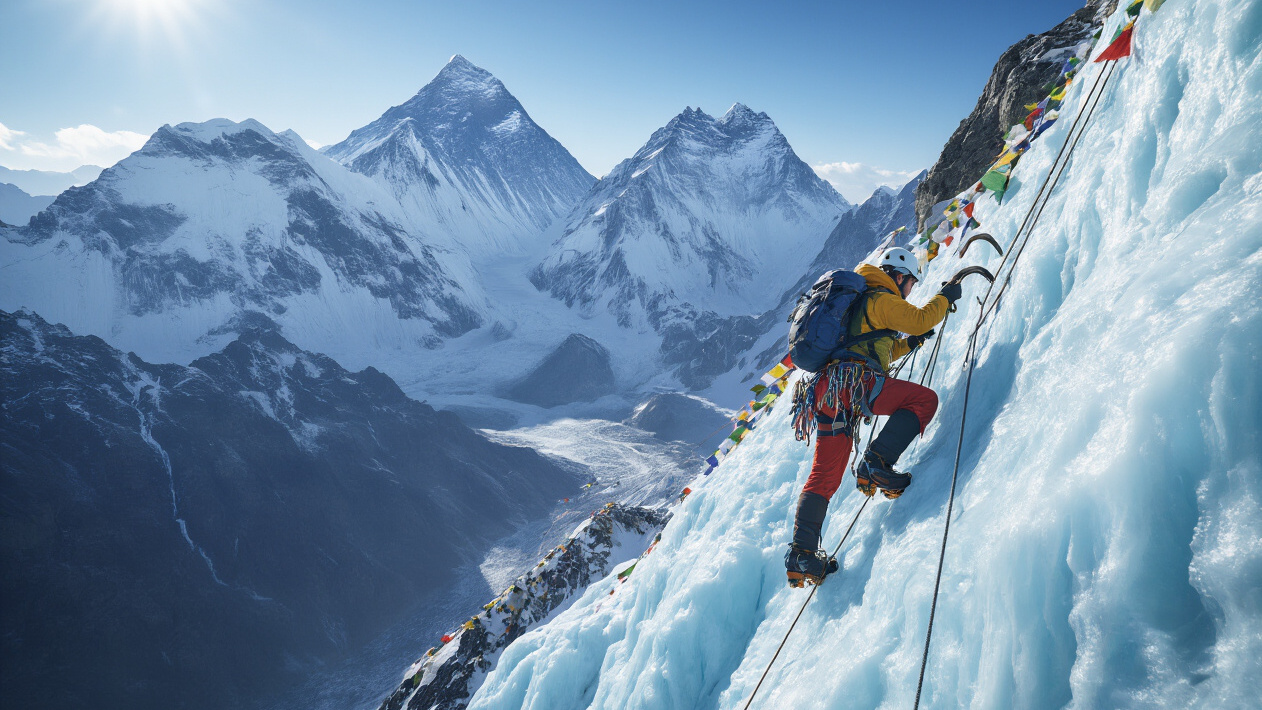
We'll walk you through the most challenging technical routes in the Himalayas, including notorious faces like Ama Dablam's Southwest Ridge and the technical sections of Makalu. You'll discover exactly what physical and mental preparation these extreme climbs demand, from altitude acclimatization protocols to the psychological strategies that keep climbers focused during multi-day technical ascents. We'll also cover the essential gear selection that can make or break your climb, plus the safety protocols that our teams have refined through decades of high-altitude technical climbing.
At Luxury Holiday Nepal, we've guided climbers through these formidable routes and witnessed firsthand how proper preparation transforms impossible-seeming challenges into achievable goals. These mountains don't forgive mistakes, but with the right knowledge and support, they offer climbing experiences that will define your lifetime.
Understanding Technical Climbing in Nepal's Extreme Terrain
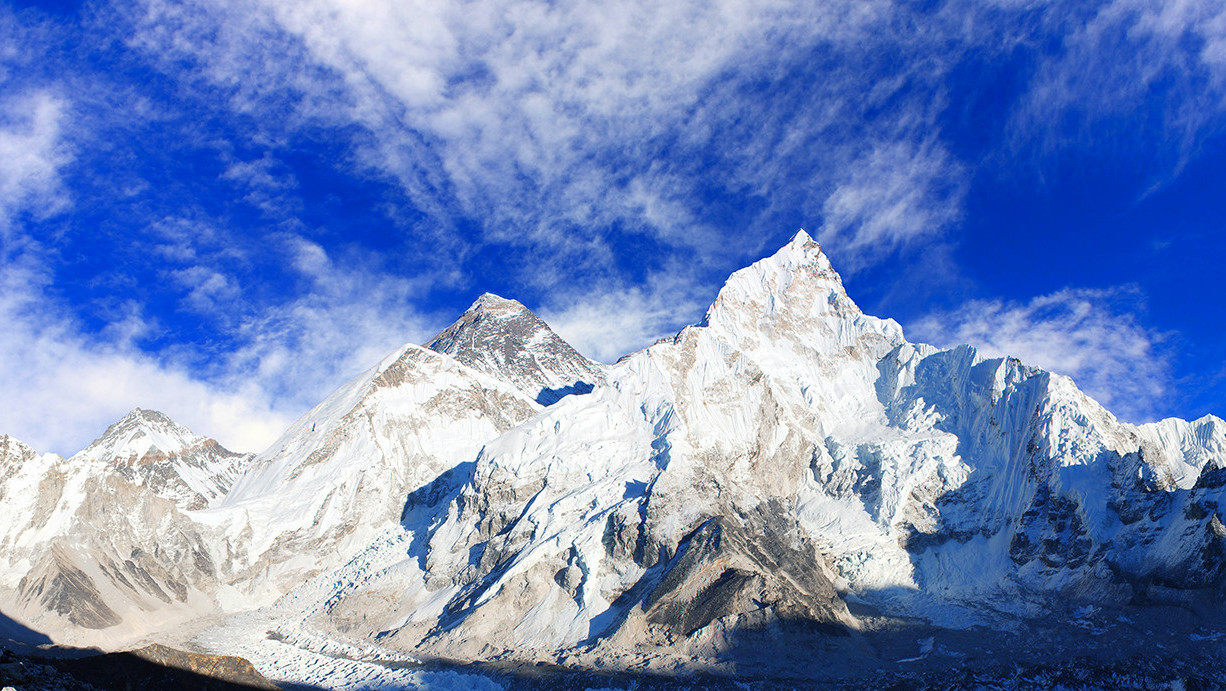
Defining Technical Climbing vs Traditional Mountaineering
We often get asked what separates technical climbing from traditional mountaineering in Nepal, and the distinction shapes everything about our approach to these challenging peaks. Traditional mountaineering typically involves walking on steep terrain, using ice axes and crampons, and following established routes with fixed camps. Technical climbing, on the other hand, requires us to navigate vertical rock faces, mixed terrain combining rock and ice, and complex route-finding through sections where we need advanced rope work and protection systems.
In Nepal's context, technical climbing means we're dealing with grades that demand specific skills: rock climbing grades of 5.7 and above, ice climbing grades of WI4+, and mixed climbing that combines both disciplines. We encounter overhanging seracs, knife-edge ridges, and sections where we might spend hours placing protection on a single pitch. The difference becomes clear when we compare a standard Everest ascent via the South Col route (traditional mountaineering) with attempting the Southwest Face of Everest (technical climbing), where we need advanced big-wall techniques and multi-day vertical camping systems.
Nepal's Unique Geological Challenges for Advanced Climbers
Nepal's geology presents us with some of the most complex climbing conditions we've encountered worldwide. We work with sedimentary rock formations that have been thrust upward and folded during the collision of tectonic plates, creating unstable rock quality in many areas. The limestone and shale found throughout the Himalayas often provides questionable protection placements, forcing us to rely heavily on our judgment and experience.
The freeze-thaw cycles at altitude create additional challenges we must navigate. Rock that appears solid during reconnaissance can become loose and dangerous due to water expansion in cracks. We've learned to assess rock quality continuously, testing holds and protection placements with extra care. The presence of verglas - thin ice coating rock surfaces - adds another layer of complexity, requiring us to switch between rock climbing and ice climbing techniques sometimes within the same move.
|
Geological Feature |
Technical Challenge |
Our Adaptation Strategy |
|
Sedimentary layers |
Loose rock, poor protection |
Extensive backup systems |
|
Freeze-thaw zones |
Rockfall danger |
Early morning starts |
|
High-altitude shale |
Crumbling holds |
Conservative route choices |
|
Limestone bands |
Sharp edges, poor friction |
Specialized protection gear |
Weather Patterns That Impact Technical Route Difficulty
We've learned that Nepal's weather patterns can transform technical routes from challenging to deadly within hours. The monsoon season from June to September brings saturated rock conditions and unstable snow, making technical climbing extremely hazardous. We typically avoid technical objectives during this period, focusing our efforts on the pre-monsoon (March-May) and post-monsoon (October-November) windows.
The jet stream's position dramatically affects our technical climbing conditions. When it sits directly over our objectives, we face sustained winds exceeding 100 mph that make technical movement impossible. We monitor jet stream forecasts closely, planning our technical pushes for periods when it moves north of the peaks.
Temperature variations create specific technical challenges we must anticipate. Rock surfaces that are climbable at dawn can become too hot to touch by midday, while ice conditions that are perfect in early morning can deteriorate to dangerous mushiness by afternoon. We've adapted our climbing schedules to work with these daily cycles, often starting technical pitches at 3 AM to maximize favorable conditions.
The afternoon storm pattern common throughout Nepal means we need to complete technical sections before clouds build up, typically by noon. Lightning strikes on exposed technical terrain pose extreme risks we cannot mitigate once storms develop.
Here are some of the best expedition packages with Luxury Holiday Nepal:-
Essential Skills Required for Nepal's Technical Ascents
We require a comprehensive skill set that goes far beyond basic mountaineering techniques. Multi-pitch rock climbing proficiency at grades 5.8 and above becomes essential, as many technical routes involve sustained vertical sections. We need solid ice climbing skills through WI5 grades, including the ability to place reliable ice protection and build anchors in poor ice conditions.
Mixed climbing techniques prove crucial for Nepal's technical objectives. We practice transitioning smoothly between rock and ice climbing modes, often within single pitches. This includes using ice tools on rock, switching between crampons and rock shoes efficiently, and reading complex terrain to choose the best line of progression.
Aid climbing skills become necessary for our most challenging objectives. We practice placing and testing protection in marginal placements, building solid anchor systems from questionable gear, and moving efficiently on technical aid pitches while wearing bulky high-altitude gear.
Big-wall camping techniques are essential for multi-day technical routes. We train extensively in setting up portaledges, managing gear and supplies on vertical terrain, and maintaining team efficiency during extended technical pushes. These skills separate recreational technical climbers from those capable of tackling Nepal's most demanding objectives.
Route-finding ability in complex terrain often determines success or failure on technical Himalayan routes. We develop skills in reading terrain from distance, identifying key features that indicate the correct line, and making route adjustments when conditions don't match our planning. This includes understanding how to retreat safely when technical difficulties exceed our capabilities or weather conditions deteriorate beyond acceptable risk levels.
Most Challenging Technical Routes in the Himalayas
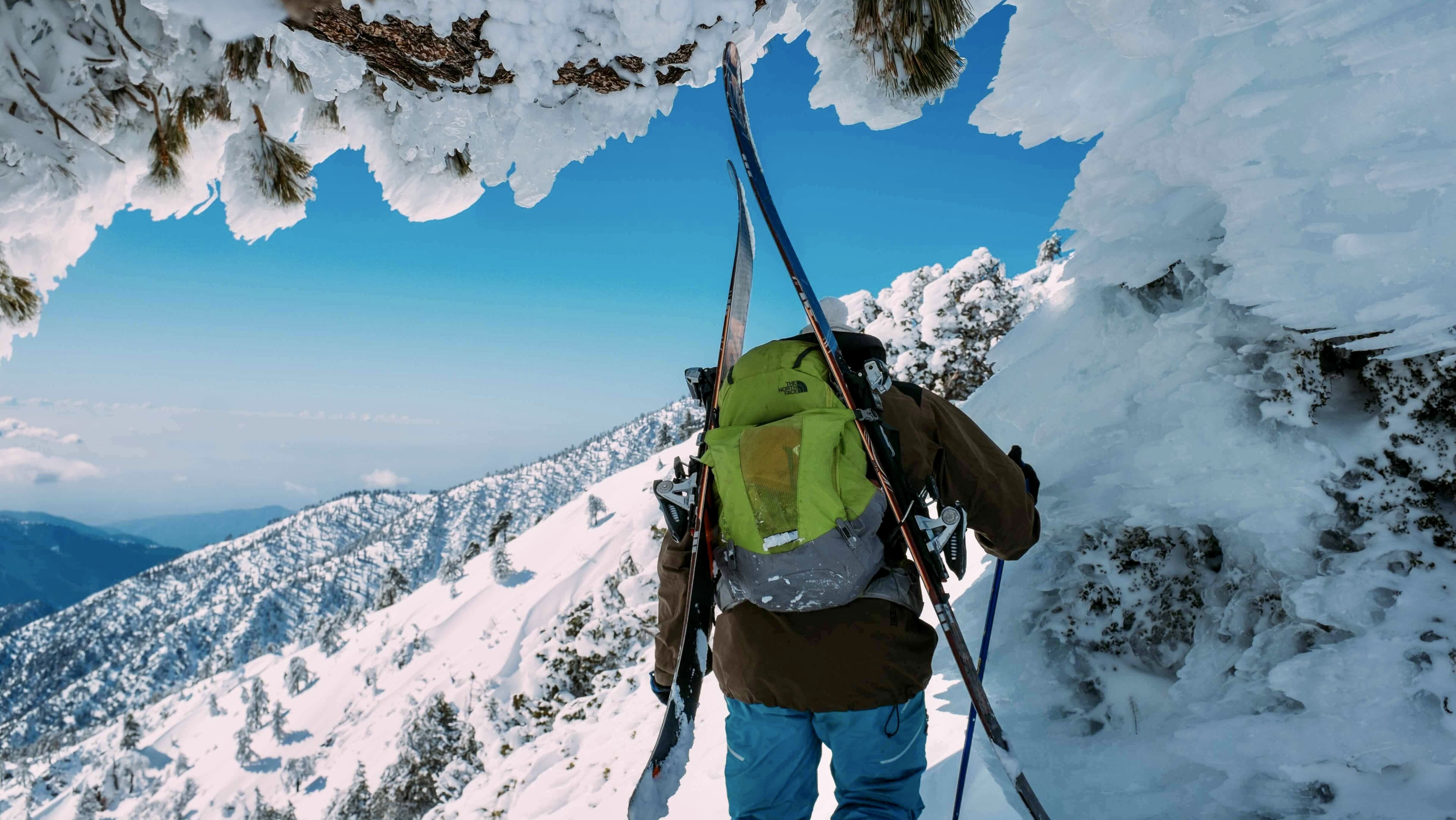
Everest's North Face and Technical Variations
We've guided countless climbers through Everest's most demanding technical challenges, and the North Face remains our ultimate test of skill and determination. The notorious Second Step at 8,610 meters presents a near-vertical rock wall that demands advanced aid climbing techniques in the death zone. Our teams regularly navigate the complex route-finding through mixed terrain where rock, ice, and snow create constantly changing conditions.
The technical variations we encounter include the challenging Norton Couloir approach, which requires precise crampon work on bullet-hard ice slopes exceeding 60 degrees. We've developed specialized strategies for the First Step's exposed traverse, where a single mistake can prove fatal. Our climbers face technical mixed climbing on loose rock at extreme altitude, making every handhold a calculated risk.
Weather windows on the North Face are notoriously narrow, forcing our teams to execute technical sequences under severe time pressure. We've mastered the art of placing protection in deteriorating rock while managing the physiological stress of extreme altitude. The route demands proficiency in both free climbing and aid techniques, often within the same pitch.
Ama Dablam's Southwest Ridge Technical Sections
Our expeditions on Ama Dablam's Southwest Ridge tackle some of the most aesthetic yet technically demanding climbing in the Himalayas. We navigate the famous "Yellow Tower," a 100-meter granite wall that requires sustained 5.7-5.9 climbing at 6,400 meters. Our teams must execute precise belaying and rappelling techniques on this exposed face where rockfall danger remains constant.
The route's technical crux lies in the mixed climbing sections approaching the summit pyramid. We guide climbers through steep ice walls interspersed with loose rock bands, requiring seamless transitions between ice tools and rock protection. Our experience shows that the key technical challenge involves route-finding through the complex terrain above the Yellow Tower, where previous expeditions have left a maze of fixed ropes and abandoned gear.
We've perfected techniques for the notorious "Mushroom Ridge," where unstable snow formations create treacherous conditions. Our teams practice advanced rope management skills essential for the multiple rappels required on descent. The technical demands include proficiency in both traditional rock climbing and steep ice techniques, often executed consecutively without rest.
Cho Oyu's Technical Alpine Routes
We've pioneered several technical variations on Cho Oyu that transform this "beginner's 8000er" into a serious alpine challenge. Our technical routes avoid the standard Northwest Ridge, instead tackling the Southwest Face's direct lines that demand advanced ice climbing skills. We navigate seracs fields that require careful route selection and timing to minimize avalanche exposure.
The technical alpine routes we guide include sustained sections of WI4+ ice climbing on the Southwest Face, where our teams encounter vertical ice walls exceeding 80 degrees. We've developed specific techniques for placing ice screws in deteriorating blue ice common at these altitudes. Our climbers must master efficient movement on steep ground while carrying full alpine loads.
We emphasize the importance of self-rescue techniques on these technical variations, as helicopter support becomes impossible on the more remote faces. Our teams practice crevasse rescue and technical hauling systems essential for the heavily crevassed approach routes. The technical demands include proficiency in alpine-style climbing with minimal fixed protection.
Manaslu's Avalanche-Prone Technical Passages
Our extensive experience on Manaslu has taught us to navigate some of the most avalanche-prone technical terrain in the Himalayas. We guide teams through the notorious "Butterfly Valley" approach, where technical ice climbing intersects with extreme avalanche danger. Our route selection constantly adapts to changing snow conditions and serac stability.
The technical passages between Camps 2 and 3 require advanced mountaineering skills in consistently dangerous terrain. We've mastered rapid movement techniques through avalanche zones while maintaining technical precision on steep ice walls. Our teams practice emergency burial response and companion rescue techniques specific to technical climbing scenarios.
We've developed innovative anchor systems for belaying in avalanche-prone zones, using techniques that allow for rapid retreat when conditions deteriorate. Our climbers learn to read subtle snow stability indicators while executing technical climbing moves. The route demands the ability to climb efficiently under extreme psychological pressure, knowing that every moment in certain zones increases exposure to avalanche risk.
Hidden Gem Routes for Expert Technical Climbers
We've established technical routes on lesser-known peaks that offer world-class climbing without the crowds of popular summits. Our expeditions to Cholatse's North Face present sustained technical climbing on perfect granite, featuring pitches up to 5.10 at altitude. We guide small teams through these demanding routes that require advanced traditional climbing skills and efficient aid techniques.
Taboche's Southwest Pillar represents our most challenging technical offering, with 800 meters of sustained mixed climbing culminating in a spectacular ice headwall. We've developed specific gear requirements and climbing strategies for this route that demand expertise in both rock and ice climbing at a high standard.
Our hidden gems include technical variations on Pumori and Lingtren that bypass standard routes entirely. We guide experienced climbers through these demanding lines that require advanced route-finding skills and the ability to establish new camps on technical terrain. These routes demand complete self-sufficiency and advanced rescue capabilities, as outside support remains impossible on the remote faces we've opened to technical climbing.
Here are some of the best Peal Climbing packages with Luxury Holiday Nepal:-
Physical and Mental Preparation for Extreme Himalayan Climbing
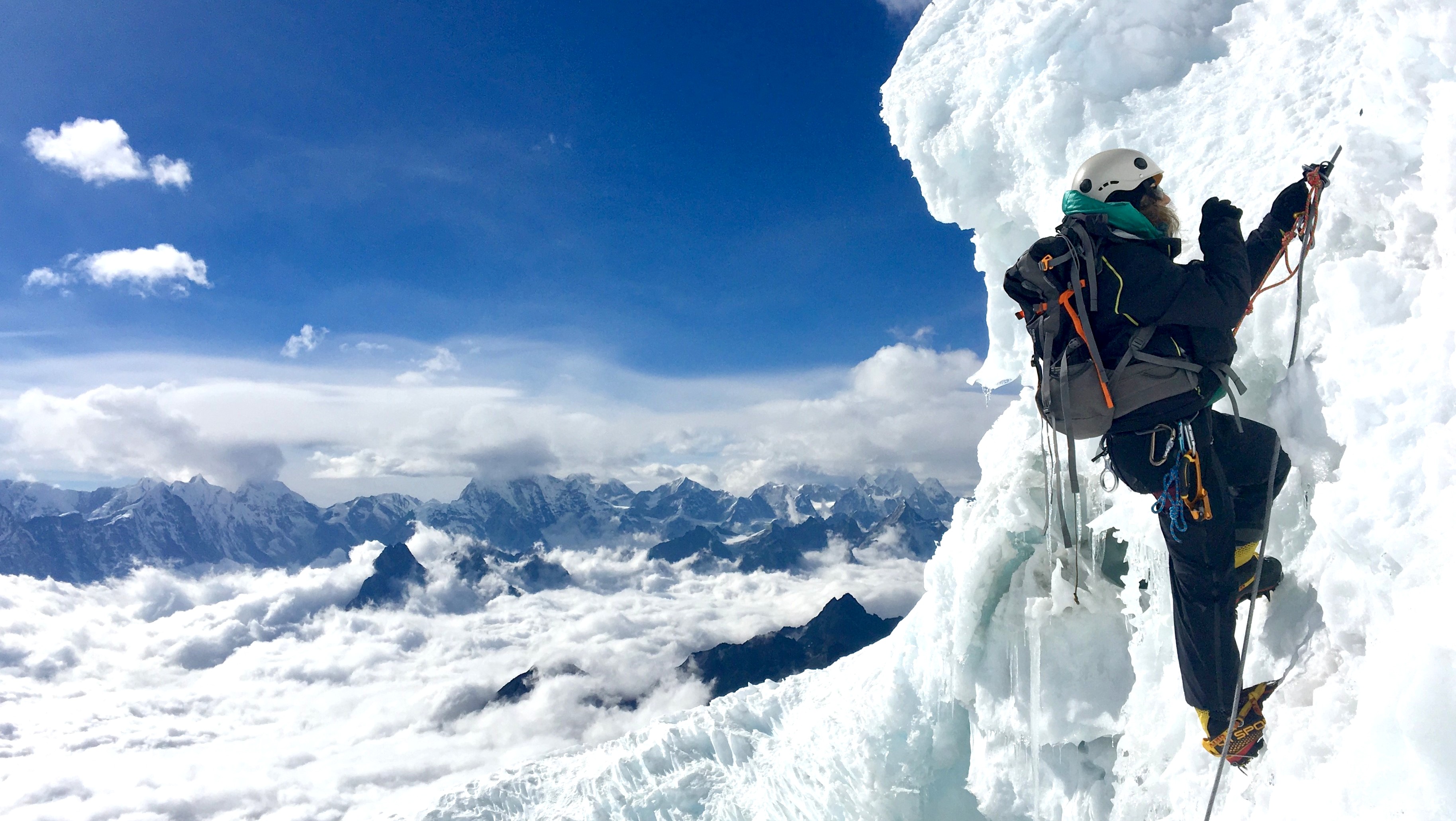
High-Altitude Conditioning Programs for Technical Routes
Physical preparation for extreme Himalayan climbing demands a completely different approach than your typical mountaineering expedition. We've learned through years of guiding technical routes that your body needs to adapt to both the extreme altitude and the demanding technical movements required on these challenging faces.
Our conditioning programs start at least 6-8 months before the expedition. We focus heavily on building aerobic capacity through extended cardiovascular training, but we also integrate specific strength training that mimics the exact movements you'll encounter on technical terrain. This includes weighted pull-ups, campus board training, and carrying heavy loads on steep inclines for extended periods.
|
Training Phase |
Duration |
Focus Areas |
Weekly Hours |
|
Base Building |
3-4 months |
Aerobic capacity, general strength |
12-15 |
|
Technical Integration |
2-3 months |
Route-specific movements, weighted carries |
15-18 |
|
Peak Preparation |
4-6 weeks |
High-intensity intervals, skill refinement |
10-12 |
We recommend spending time at intermediate altitudes whenever possible. Training camps between 3,000-5,000 meters help your body start adapting to reduced oxygen levels while you're still developing technical skills. The combination creates a foundation that serves you well when you're hanging off a vertical ice wall at 7,000 meters.
Rock and Ice Climbing Skills Development
Technical Himalayan routes demand mastery of multiple climbing disciplines, often within the same pitch. We've seen climbers struggle because they specialized in only one area - rock or ice - without developing competency across the full spectrum of technical terrain.
Our skill development program emphasizes mixed climbing techniques that you'll encounter on routes like the North Face of Lhotse or Annapurna's South Face. This means becoming equally comfortable placing ice screws in brittle high-altitude ice and placing rock protection in loose, fractured granite at extreme elevation.
We spend considerable time on movement efficiency because every extra movement at altitude costs precious energy. Learning to climb with heavy packs, multiple layers of clothing, and bulky gloves becomes essential. We practice these skills in controlled environments first, then gradually introduce the complications of altitude and weather.
Speed becomes crucial on technical routes where weather windows are narrow. We train our climbers to move efficiently through technical terrain without sacrificing safety. This includes practicing rope management, gear organization, and communication systems that work even when you're exhausted and hypoxic.
Mental Resilience Training for Life-Threatening Situations
The mental demands of technical Himalayan climbing go far beyond what most climbers experience on lower-altitude routes. We've watched strong technical climbers completely shut down mentally when faced with the combination of extreme exposure, altitude effects, and genuine life-threatening situations.
Our mental training program addresses specific scenarios you'll encounter: making critical decisions while hypoxic, maintaining focus during multi-day technical climbing with minimal sleep, and managing fear when retreat becomes impossible. We use visualization techniques where climbers mentally rehearse challenging situations, including equipment failures and weather emergencies.
Stress inoculation training forms a core part of our program. We create controlled high-stress situations during training climbs where decisions have real consequences. This might involve night climbing in poor weather, technical rescues of team members, or navigating route-finding challenges under time pressure.
We also focus on building decision-making frameworks that work even when your cognitive abilities are compromised by altitude. Simple protocols for evaluating risk, determining when to continue or retreat, and managing team dynamics become invaluable when you're operating at your mental limits.
Nutrition and Hydration Strategies at Extreme Elevations
Maintaining proper nutrition and hydration on technical routes presents unique challenges that we've had to solve through years of trial and error. Your caloric needs increase dramatically due to the combination of technical climbing demands and altitude effects, yet your appetite often decreases significantly.
We develop personalized nutrition plans that account for individual preferences, dietary restrictions, and specific route demands. High-calorie, easily digestible foods become essential, but they must also be practical to consume while wearing gloves and hanging from a portaledge at 20,000 feet.
|
Elevation Range |
Daily Caloric Needs |
Hydration Requirements |
Key Considerations |
|
Base Camp - 6,000m |
4,000-5,000 calories |
4-5 liters |
Appetite still normal |
|
6,000m - 7,500m |
5,000-6,000 calories |
5-6 liters |
Appetite decreases |
|
Above 7,500m |
6,000+ calories |
6+ liters |
Forced feeding necessary |
Hydration becomes particularly challenging because melting snow and ice requires fuel and time, both precious resources on technical routes. We train our climbers to maintain hydration discipline even when it's inconvenient or uncomfortable. Dehydration at extreme altitude can quickly become life-threatening and severely impact both physical performance and decision-making abilities.
We've found that liquid calories often work better than solid food at extreme elevations. Energy drinks, soups, and specially formulated climbing nutrition products can provide essential calories when solid food becomes unpalatable. Planning these nutrition strategies during training climbs helps identify what works for each individual climber before they're committed to a technical route where retreat isn't always possible.
Essential Technical Gear and Equipment Selection
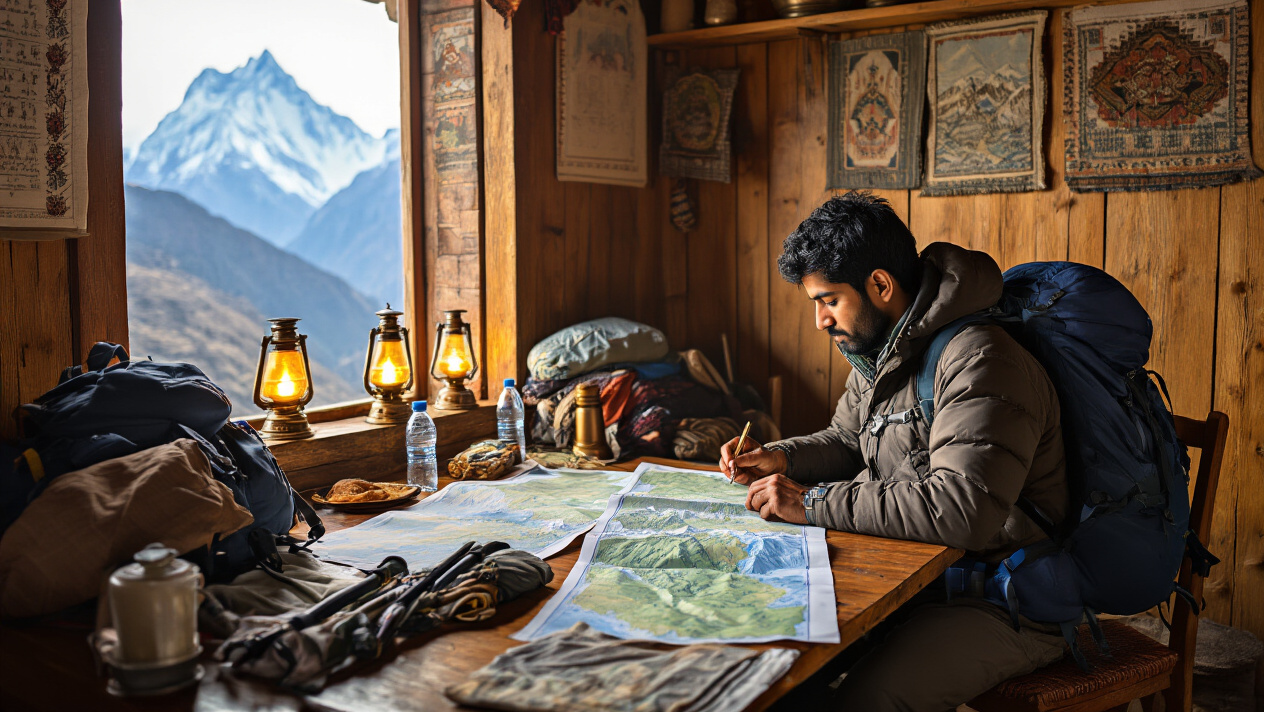
Advanced Climbing Hardware for Himalayan Conditions
The extreme conditions of the Himalayas demand climbing hardware that can withstand temperatures dropping to -40°C, fierce winds, and the constant freeze-thaw cycle that wreaks havoc on standard equipment. We recommend investing in titanium ice screws and pitons, which resist corrosion and maintain strength in extreme cold. Our experience has shown that standard aluminum gear often becomes brittle and fails when you need it most.
For technical routes, we prioritize bringing a full rack of specialized protection, including:
-
Ice screws: 16-22cm titanium screws with aggressive threads
-
Rock protection: Cams and nuts designed for quartzite and granite
-
Pitons: Titanium and steel varieties for mixed terrain
-
Anchors: Specialized V-thread tools and Abalakov devices
The carabiner selection becomes critical at altitude, where fumbling with gear in thick gloves can be life-threatening. We exclusively use large-gate carabiners with easy-action springs that function reliably even when iced up. Screw-gate carabiners should have oversized sleeves that accommodate gloved hands.
Ropes for Himalayan technical climbing need special consideration. We typically carry two ropes - a dynamic lead rope (9.5-10mm) and a static or semi-static haul line. The lead rope must maintain flexibility in extreme cold while the haul line handles the punishment of repeated loading over sharp edges.
High-Altitude Clothing Systems for Technical Ascents
Our clothing philosophy for technical climbing centers on the layering system that allows precise temperature regulation while maintaining full mobility. The base layer becomes your second skin, and we swear by merino wool blends that wick moisture while retaining warmth even when damp. Synthetic options work well too, but natural fibers have proven more durable during extended expeditions.
The insulation layer requires careful selection based on the specific route and conditions. We typically bring multiple options:
|
Layer Type |
Material |
Temperature Range |
Best Use |
|
Light Insulation |
Synthetic |
-10°C to 5°C |
Active climbing |
|
Medium Insulation |
Down/Synthetic hybrid |
-25°C to -5°C |
Belaying, moderate activity |
|
Heavy Insulation |
High-fill down |
-40°C to -15°C |
Camp, extreme cold |
The shell layer must balance breathability with protection from wind and precipitation. We've found that three-layer Gore-Tex Pro or similar membranes provide the best performance for technical climbing where mobility is paramount. Pit zips and other ventilation options become essential when working hard on challenging sections.
Extremity protection often makes the difference between success and retreat. Our glove system includes liner gloves, insulated climbing gloves, and expedition mitts. We also carry chemical hand warmers as backup heat sources during long belays or when dealing with gear in
extreme conditions.
Specialized Safety Equipment for Extreme Routes
Safety equipment for Himalayan technical climbing goes beyond standard mountaineering gear. We carry specialized rescue equipment that could save lives when evacuation isn't immediately possible. Our safety kit includes a comprehensive first aid system with altitude-specific medications, emergency bivouac gear, and repair materials for critical equipment.
Avalanche safety becomes paramount on many technical routes. We never venture onto exposed terrain without:
-
Avalanche transceivers: Digital three-antenna models with multiple burial search capability
-
Probes: Lightweight carbon fiber probes extending to 300cm
-
Shovels: Aluminum blades with telescoping handles
-
Snow study tools: Crystal cards, slope meters, and thermometers
Self-rescue equipment forms another critical category. We carry prusik cords, mechanical ascenders, and pulleys that enable complex rescue scenarios. A haul system becomes essential when partners are injured or when heavy loads need to be moved efficiently up technical terrain.
Emergency shelter options range from lightweight bivouac sacks for planned bivouacs to emergency shelters that can protect a team during unexpected storms. We've learned that spending money on quality emergency gear pays dividends when conditions deteriorate rapidly.
Communication and Navigation Tools for Remote Areas
Communication equipment becomes a lifeline when climbing in remote Himalayan locations where cell coverage doesn't exist and rescue operations face significant challenges. We rely on satellite communication devices that provide two-way messaging and emergency beacon capabilities. Personal locator beacons (PLBs) serve as backup devices that can summon international rescue services when all else fails.
Our navigation toolkit combines traditional and modern methods. GPS devices with preloaded topographic maps provide precise location data, but we always carry backup in the form of detailed paper maps and traditional compass. Weather can destroy electronic devices, and batteries fail in extreme cold, making redundancy critical.
Weather monitoring equipment helps us make informed decisions about route conditions and timing. We carry portable weather stations that measure temperature, humidity, barometric pressure, and wind speed. This data, combined with weather forecasts received via satellite communication, allows us to anticipate dangerous conditions before they develop.
Route documentation tools help us share information with future climbing parties and provide valuable data for rescue operations if needed. We use GPS units to mark critical waypoints, hazard locations, and emergency cache sites. Digital cameras with GPS tagging create comprehensive records of route conditions and potential hazards.
Emergency signaling devices round out our communication arsenal. Signal mirrors, emergency whistles, and flares provide basic signaling capability when electronic devices fail. We've seen situations where these simple tools made the difference in successful rescue operations.
Safety Protocols and Risk Management Strategies
Weather Window Assessment for Technical Climbs
We never underestimate the power of weather in the Himalayas. When planning technical climbs, we monitor multiple meteorological systems and work closely with local weather stations to identify optimal climbing windows. Our approach involves tracking high-altitude wind speeds, precipitation patterns, and temperature fluctuations at least 7-10 days before any ascent attempt.
We use satellite imagery and ground-based weather stations to assess cloud formation patterns around peaks. The jet stream positioning becomes critical for summit pushes, as winds exceeding 60 mph can make technical climbing impossible. We maintain constant communication with meteorologists who specialize in high-altitude conditions and cross-reference multiple weather models to ensure accuracy.
Our teams establish weather checkpoints throughout the climbing route where we monitor real-time conditions. We've learned that microclimate variations can differ dramatically between base camp and higher elevations, so we never rely solely on base camp readings. Each team carries portable weather monitoring devices to track barometric pressure, wind speed, and temperature changes during the climb.
Avalanche and Rockfall Risk Mitigation
We conduct thorough snow stability assessments before entering any technical terrain. Our guides are trained in avalanche hazard evaluation and carry out daily snow pit tests to assess layer bonding and identify potential weak points. We maintain detailed records of recent weather patterns, wind loading, and temperature cycles that contribute to avalanche conditions.
Our route planning always includes identifying safe zones and escape routes in case of avalanche danger. We equip every team member with avalanche transceivers, probes, and shovels, and conduct regular practice sessions on their use. We also establish specific travel protocols for avalanche-prone areas, including spacing between climbers and designated safe assembly points.
For rockfall mitigation, we schedule climbs during optimal times when freeze-thaw cycles minimize loose rock movement. We provide all climbers with helmets rated for mountaineering impacts and teach proper positioning techniques to avoid rockfall zones. Our guides scout routes extensively to identify the safest passage through technical rock sections and mark areas of particular concern.
Emergency Evacuation Planning from Remote Technical Routes
We develop comprehensive evacuation plans before starting any technical climb, mapping helicopter landing zones and identifying the closest medical facilities capable of handling high-altitude emergencies. Our evacuation strategies account for weather limitations that might prevent helicopter rescues and include ground-based evacuation routes.
We maintain detailed communication protocols with rescue services and have pre-arranged agreements with helicopter operators who specialize in high-altitude rescues. Each expedition carries GPS beacons and satellite communication devices that allow us to transmit precise location coordinates during emergencies.
Our evacuation plans include staging areas where injured climbers can be stabilized while waiting for rescue. We train team members in technical rescue techniques, including lowering systems and improvised stretcher construction. We also maintain comprehensive medical kits specifically designed for treating injuries common to technical climbing, such as traumatic injuries from falls or rockfall.
Team Communication Systems During Critical Ascents
We establish redundant communication systems that function reliably in extreme conditions. Our primary communication setup includes two-way radios with extended battery life and backup satellite phones for emergency situations. We ensure all devices are tested thoroughly before departure and carry spare batteries and charging systems.
We implement structured communication protocols with scheduled check-in times between team members and Basecamp. Our guides maintain communication logs that track team progress, weather conditions, and any emerging concerns. We use standardized communication codes to convey critical information quickly and clearly, especially during challenging sections where extended conversations aren't practical.
Our communication strategy includes designated team members responsible for maintaining contact with external support, including weather services, rescue teams, and expedition logistics coordinators. We establish communication windows that account for the technical demands of climbing while ensuring regular safety updates.
Medical Emergency Response at High Altitude
We prepare extensively for medical emergencies unique to high-altitude technical climbing. Our medical protocols address altitude-related illnesses, traumatic injuries from falls, hypothermia, and frostbite treatment. Each expedition includes team members trained in wilderness first aid and high-altitude medicine.
Our medical response procedures include immediate stabilization techniques, pain management options suitable for high altitude, and decision-making protocols for evacuation versus continued treatment on the mountain. We carry comprehensive medical supplies including medications for altitude sickness, equipment for treating fractures, and materials for wound care in harsh conditions.
We maintain detailed medical histories for all team members and develop individualized emergency response plans based on pre-existing conditions and medications. Our medical protocols include procedures for administering emergency medications and coordinating with medical professionals via satellite communication when needed. We also train team members to recognize early signs of serious altitude-related conditions that require immediate descent or evacuation.
Maximizing Your Technical Climbing Experience with Professional Support
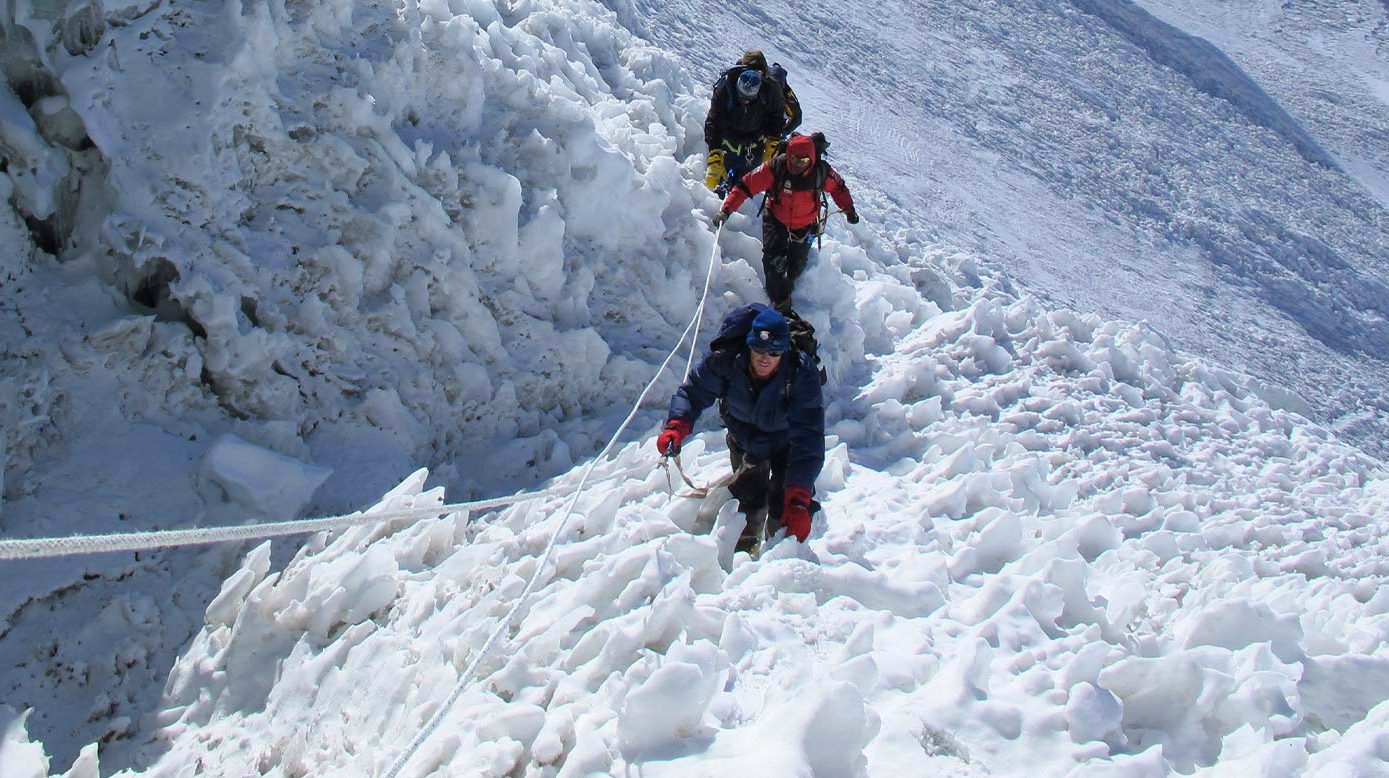
Selecting Experienced Technical Climbing Guides
When we tackle Nepal's most demanding technical routes, we understand that having the right guide can make the difference between success and disaster. Our experienced technical climbing guides bring decades of Himalayan expertise, combining intimate knowledge of local conditions with advanced climbing techniques. We carefully select guides who hold international certifications from organizations like IFMGA (International Federation of Mountain Guide Associations) and have extensive experience on the specific routes our clients want to attempt.
Our guide selection process goes beyond technical skills. We look for professionals who understand the unique challenges of high-altitude technical climbing, from ice fall navigation to mixed terrain expertise. Each guide in our network has completed multiple ascents of major Himalayan peaks and possesses emergency medical training. We also prioritize guides who speak multiple languages and can effectively communicate complex technical instructions under stressful conditions.
What sets our guides apart is their ability to read mountain conditions and make real-time decisions that keep our climbers safe while pushing their limits. They understand when to turn back, when to push forward, and how to adapt climbing strategies based on changing weather patterns and route conditions.
Customized Expedition Planning for Advanced Routes
We approach each technical climbing expedition as a unique challenge requiring personalized planning. Our expedition planning begins months before departure, starting with detailed route analysis and risk assessment. We work closely with our clients to understand their climbing background, technical skills, and specific objectives for their Himalayan adventure.
Our planning process includes creating detailed acclimatization schedules tailored to each route's demands. For technical routes like Ama Dablam's southwest ridge or Pumori's northwest face, we design specific training rotations that prepare climbers for the technical challenges they'll face. We also coordinate with local authorities for permits and establish strategic camp locations based on current route conditions.
Weather window planning forms a critical component of our customized approach. We maintain relationships with multiple weather forecasting services and local meteorological stations to provide our clients with the most accurate predictions possible. Our expedition leaders continuously monitor conditions and adjust timelines to maximize summit opportunities while maintaining safety standards.
Logistics coordination includes helicopter support planning, evacuation routes, and communication systems. We establish multiple contingency plans for every expedition, ensuring our clients have options regardless of how conditions develop during their climb.
Luxury Base Camp Services for Technical Climbers
Technical climbers deserve comfort and proper rest between challenging climbing days, which is why we've developed comprehensive luxury base camp services. Our base camps feature heated dining tents with comfortable seating, allowing climbers to properly recover while reviewing route strategies and weather updates with their guides.
We provide high-quality sleeping accommodations with insulated tents, comfortable sleeping systems, and privacy options that allow climbers to rest properly between rotations. Our camp kitchens are staffed by experienced cooks who understand the nutritional needs of technical climbers, preparing meals that support recovery and energy requirements for demanding routes.
Communication systems at our base camps include satellite internet and phone services, allowing climbers to stay connected with family and share their experiences in real-time. We also maintain comprehensive medical facilities staffed by experienced mountain medicine practitioners who understand the specific challenges faced by technical climbers.
Our equipment services include gear maintenance and repair facilities, with replacement equipment available for critical items. We understand that technical climbing puts significant stress on equipment, and our support teams are prepared to address any gear issues that arise during expeditions.
Post-Climb Recovery and Celebration Options
After completing challenging technical routes, we believe our clients deserve proper celebration and recovery time. Our post-climb services begin immediately after descent, with comprehensive medical evaluations and personalized recovery planning. We work with sports medicine specialists who understand the physical demands of technical Himalayan climbing.
Recovery options include luxury accommodations in Kathmandu with spa services, massage therapy, and nutritional support designed to help climbers recover from their efforts. We partner with high-end hotels that understand the unique needs of returning climbers, providing comfortable environments for physical and mental recovery.
Celebration planning includes organizing summit certificate ceremonies, opportunities to share experiences with other climbers. We understand that completing technical routes in the Himalayas represents significant personal achievements that deserve proper recognition.
We also provide options for extended recovery stays in Nepal, including cultural tours, wildlife safaris, and opportunities to explore the country beyond the mountains. Many of our technical climbers choose to extend their stays, using their post-climb time to experience Nepal's rich cultural heritage while allowing their bodies to fully recover from their climbing efforts.
Our post-expedition services include gear cleaning and shipping arrangements, detailed expedition reports, and planning support for future climbing objectives. We maintain long-term relationships with our clients, helping them plan subsequent technical climbing adventures based on their experiences and evolving skills.
Nepal's technical climbing routes offer an unmatched combination of physical challenge and spiritual reward that continues to draw climbers from around the world. We've explored how proper preparation, from mental conditioning to gear selection, can make the difference between success and failure on these demanding peaks. The importance of understanding terrain-specific challenges and implementing robust safety protocols cannot be overstated when tackling routes that push even experienced climbers to their limits.
Working with professional guides and support teams transforms what could be an overwhelming experience into a manageable adventure. We believe that investing in expert guidance, quality equipment, and comprehensive preparation allows climbers to focus on what matters most – experiencing the raw beauty and personal growth that comes with conquering Nepal's most technical routes. The mountains will always be there, waiting for those brave enough to accept their challenge while respecting their power.
If you need any further information, please contact us by email: at [email protected], Phone: at +977- 985 100 5129 (WhatsApp)

Jyoti Karki
Jyoti Karki is an expert content manager and SEO specialist. She has been creating high-quality travel content for a long time, showcasing her deep understanding of destinations and her talent for engaging storytelling. Along with writing about diverse locations, she personally travels to many different places, going on hikes and treks across Nepal and exploring several regions of India, which enriches her content with firsthand experience. Her work reflects both her passion for travel and her commitment to producing well-researched, SEO-optimized blogs that resonate with readers.
Tripadvisor
5.0928 reviewsGoogle
4.8114 reviewsFacebook
4.1 recommend44 ReviewsTrustpilot
4.1 Great(5 reviews)- Trusted by50K plus traveller


